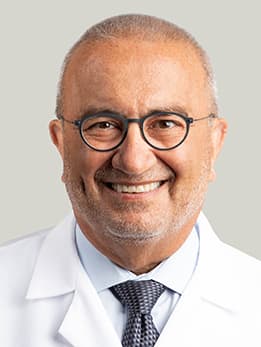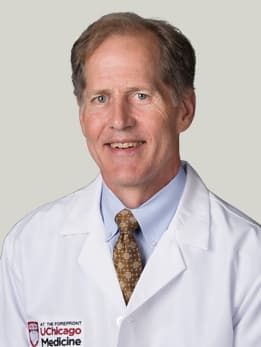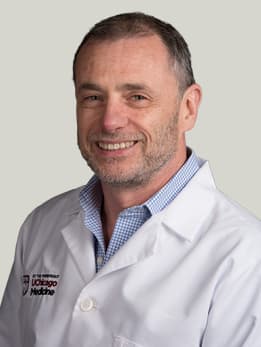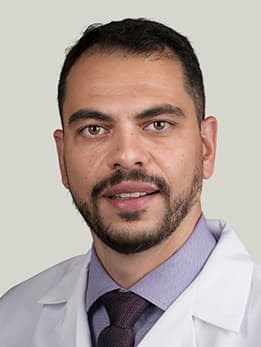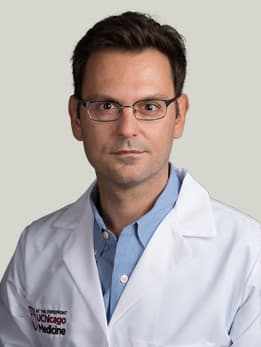Types of Stroke
What is a Stroke?
A stroke (also called a "cerebrovascular accident") occurs when blood vessels carrying oxygen and other nutrients to a specific part of the brain suddenly burst or become blocked. When blood fails to get through to the affected parts of the brain, the oxygen supply is cut off, and brain cells begin to die.
Types of Strokes
Strokes fall into several major categories based on whether the disrupted blood supply is caused by a blocked blood vessel or a hemorrhage. Since each type of stroke has a different type of treatment, it is very important for the physician to determine the cause of the stroke, as well as the location, as quickly as possible.
Ischemic stroke results from a blocked blood vessel, either within an artery in the brain (thrombotic stroke), or in another artery within the body, and the clot or blockage breaks loose and travels to the brain (embolic stroke). Thrombotic is the most common type of ischemic stroke, with a blood clot forming inside an artery in the brain, blocking blood flow. Sometimes, the clot occurs in one of the neck arteries (carotid or vertebral) that transports blood from the heart to the brain.
Blood clots form most often in arteries damaged by atherosclerosis, a disease in which rough, fatty deposits build up on the walls of the arteries and project into the bloodstream. These deposits gradually narrow the passageway, causing the blood flow to slow down and, sometimes, to completely occlude (block) the artery.
The other main category of stroke, hemorrhagic stroke, occurs when a blood vessel in or around the brain ruptures, spilling blood into the brain or the area surrounding the brain. When this occurs, the cells nourished by the artery fail to get their normal supply of nutrients and cease to function properly.
Furthermore, the accumulated blood from the ruptured artery soon clots, displacing normal brain tissue and disrupting brain function. Cerebral hemorrhage is most likely to occur in people who suffer from a combination of atherosclerosis and high blood pressure.
About one-third of all strokes are preceded by one or more "mini-strokes," known as transient ischemic attacks (TIAs). TIAs can occur days, weeks or even months before a stroke. TIAs occur when a blood clot temporarily clogs an artery, and part of the brain does not get the blood it needs. The symptoms occur rapidly and last a relatively short time. Most TIAs last less than 5 minutes. The average is about a minute. Unlike stroke, when a TIA is over, there's no injury to the brain.
TIAs are extremely important predictors of stroke. Do not ignore them! If symptoms appear, call 911 to get immediate medical help. A doctor should determine if a TIA or stroke has occurred, or if it is another medical problem with similar symptoms. Prompt medical or surgical attention to these symptoms could prevent a fatal or disabling stroke from occurring.
Stroke Risk and Prevention
- High blood pressure: It's the leading cause of stroke and the most important controllable risk factor.
- Cigarette smoking:The nicotine and carbon monoxide in cigarette smoke damage the cardiovascular system in many ways. The use of oral contraceptives combined with cigarette smoking greatly increases the risk of a stroke.
- Diabetes mellitus: Diabetes is an independent risk factor for stroke. Many people with diabetes also have high blood pressure, high blood cholesterol and are overweight. This increases their risk even more. While diabetes is treatable, the presence of the disease still increases the risk of stroke.
- High blood cholesterol: People with high blood cholesterol have an increased risk for stroke.
- Physical inactivity and obesity: Being inactive, obese or both can increase your risk of high blood pressure, high blood cholesterol, diabetes, heart disease and stroke. Try to get a total of at least 30 minutes of activity every day or on most days.
- Carotid (or other) artery disease: The carotid arteries in the neck supply blood to the brain. A carotid artery narrowed by plaque buildups in artery walls may become blocked by a blood clot.
- Peripheral artery disease (PAD): PAD is the narrowing of blood vessels carrying blood to leg and arm muscles, caused by fatty buildups of plaque in artery walls. People with peripheral artery disease have a higher risk of carotid artery disease, which raises their risk of stroke.
- Atrial fibrillation: In this heart rhythm disorder, the heart's upper chambers quiver instead of beating effectively, which can let the blood pool and clot. If a clot breaks off, enters the bloodstream and lodges in an artery leading to the brain, a stroke results.
- Other heart disease conditions: People with coronary heart disease or heart failure have a higher risk of stroke than those who do not. Dilated cardiomyopathy (an enlarged heart), heart valve disease and some types of congenital heart defects also raise the risk of stroke.
- Sickle cell disease (also called sickle cell anemia): This is a genetic disorder that mainly affects African-American and Hispanic children. Sickle-shaped red blood cells are less able to carry oxygen to the body's tissues and organs, and also tend to stick to blood vessel walls, which can block arteries to the brain and cause a stroke.
- Poor diet: Diets high in saturated fat, trans fat and cholesterol can raise blood cholesterol levels, while diets high in salt can contribute to increased blood pressure. A diet containing five or more servings of fruits and vegetables per day may help reduce the risk of stroke.
- Age: The chance of having a stroke approximately doubles for each decade of life after age 55. While stroke is common among the elderly, a lot of people under 65 also have strokes.
- Heredity (family history) and race: Your stroke risk is greater if a parent, grandparent, sister or brother has had a stroke. African-Americans have a much higher risk of death from a stroke than Caucasians do, partly because blacks have higher risks of high blood pressure, diabetes and obesity.
- Sex (gender): Stroke is more common in men than in women. In most age groups, more men than women will have a stroke in a given year. However, more than half of total stroke deaths occur in women. At all ages, more women than men die of stroke. Use of birth control pills and pregnancy pose special stroke risks for women.
- Prior stroke, TIA or heart attack: The risk of stroke for someone who has already had one is many times that of a person who has not. Transient ischemic attacks (TIAs) are "warning strokes" that produce stroke-like symptoms but no lasting damage. TIAs are strong predictors of stroke. A person who has had one or more TIAs is almost 10 times more likely to have a stroke than someone of the same age and sex who has not. Recognizing and treating TIAs can reduce your risk of a major stroke. If you have had a heart attack, you are at higher risk of having a stroke, too.
Stroke is the third leading cause of death in the United States, claiming nearly 700,000 lives every year. It is also one of the leading causes of disability among American adults. The good news is that stroke can be prevented. In fact, according to the National Stroke Association, up to 80 percent of strokes are preventable.
- Surgery: Surgical techniques may be performed to prevent stroke in patients with certain conditions.
- Carotid Endarterectomy: This procedure removes atherosclerotic plaque from the carotid artery when this vessel is blocked. It has recently been proven that for certain patients with minor strokes or TIAs, carotid endarterectomy is highly beneficial in preventing future strokes. This procedure is also beneficial for some patients with blockage of the carotid arteries who have not had previous symptoms.
- Stenting of Vessels in the Neck: Stenting of vessels in the neck is a newer procedure offered at a few select hospitals in the area, including UChicago Medicine Ingalls. Stenting of carotid arteries involves the use of a fine, tubular wire mesh to hold the vessel open.

